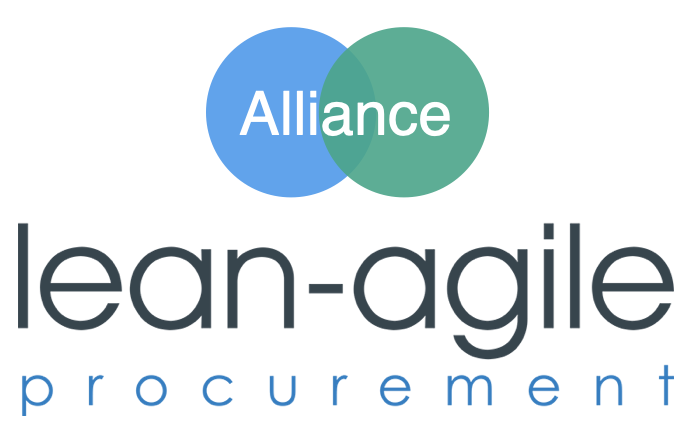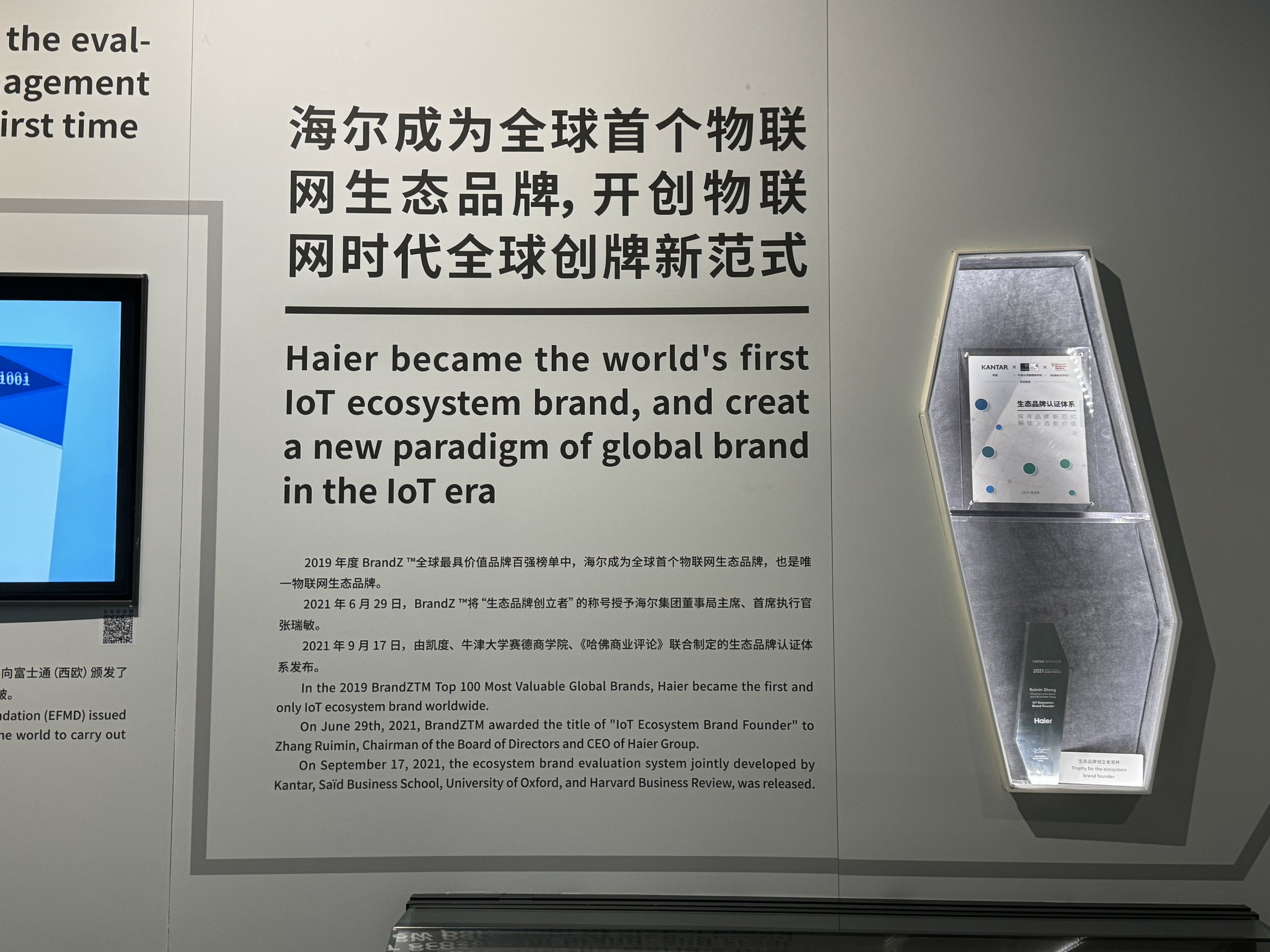Haier - Insights, Learnings and Experiences (Post 1 - Visiting Haier)
Mirko Kleiner - As a Thought Leader in Lean-Agile Procurement and a Registered Scrum@Scale Trainer, my personal mission is to unite various movements—Agile Leadership, Extreme Manufacturing, Scaling Agile, Lean-Agile Procurement, and more—to push the boundaries of Business Agility across organizations.
One company that stands out, and perhaps the only one of its kind globally, is Haier. With over 50 years of history as a white goods manufacturer, Haier has undergone its sixth major transformation, evolving into a network of over 4,700 Micro Enterprises (ME), all interconnected within Ecosystem Micro Communities (EMC).
Each ME operates with its own balance sheet, its own people, and collaborates closely with partners who share in the ECM’s success. This win-win philosophy, implemented on such a massive scale, is truly unprecedented and sets Haier apart as a pioneer in organizational and management innovation.
For over two years, the LAP Alliance has partnered with the Haier Model Institute (HMI), itself a Micro Enterprise within the Haier Group. Its mission is to spread the word about Haier’s New Economic Engine, or RenDanHeYi, which serves as the foundation of Haier's management model. For those unfamiliar with Haier, it is arguably the most disruptive and successful organization in the world, operating with virtually no bureaucracy and achieving an impressive annual growth rate of 20% over the last decade.
In this series of blog posts, I’ll be sharing key insights, learnings, and experiences from my visits to Haier, and why I believe the future of business lies in a New Economic Engine driven by AI and Business Ecosystems.
Post 1 - Visiting Haier in Qingdao, China August 2024.
During one of our regular calls, the Haier Model Institute (HMI) surprised me with the news that I had been appointed as an HMI Expert and Partner—an honor I hadn’t anticipated. As part of this role, I was asked to support the Haier ZeroDX Awards 2024 by nominating leading individuals, organizations, or cases that have developed a New Economic Engine similar to Haier’s. I was deeply honored and immediately began reaching out to my global network and clients. Before long, I had gathered a handful of outstanding candidates—but that’s a story for another post.
Around the same time, I was in the final stages of planning my business trip to Melbourne, Australia. I explored the possibility of altering my return itinerary to include a visit to Haier. Once I got the green light from my travel agency, I quickly contacted my colleagues at HMI. They were thrilled and put together an exciting two-day program for my visit.
Arriving in Qingdao
Despite having traveled to countless countries, this was my first trip to China. I was a bit nervous, not knowing what to expect since I don’t speak the language. I arrived late at night at Qingdao International Airport. Qingdao, considered a small and relatively new city by Chinese standards, still boasts a population of over 8 million. I was immediately blown away by the city's modern infrastructure and quickly fell in love with the rich Chinese culture and cuisine.
1st Day at Haier
On my first day at Haier, I finally had the pleasure of meeting my colleagues from the Haier Model Institute (HMI) in person. We kicked things off with a strategic discussion, sharing experiences, diving into the details of RenDanHeYi, which I’ve explained in more depth in the Post 2 - The New Economic Engine.
After a pleasant lunch, I had the privilege of visiting the Haier Exhibition Center, an experience that truly showcased Haier's innovation and impact.
This is how I was welcomed at Haier—truly awesome! The Haier Exhibition Center is something everyone should experience. Beyond showcasing Haier's rich history, it highlights the four major transformations the company has undergone. A key turning point was the dismantling of the traditional hierarchy, freeing employees and empowering them to act as entrepreneurs—one of the core principles of RenDanHeYi.
This pivotal moment occurred back in 2006, when Haier turned its traditional hierarchy upside down, revolutionizing the way the company operated.
Haier became the world’s first IoT ecosystem brand, and create a new paradigm of global brand in the IoT eary.
As I walked through the exhibition, I struggled to keep up with the overwhelming number of insights, lessons, and success stories. Beyond Haier’s impressive journey of continuous improvement and disruptive changes, I was introduced to their innovative platforms. One standout example is their energy platform, which connects a wide range of energy consumers, producers, and transportation facilities for various types of energy, including gas, oil and electricity.
Imagine a portal capable of managing the energy needs of an entire country—it’s truly mind-blowing. It made me reflect on a recent sourcing project I was involved in for smart meters in gas pipelines, which now seems incredibly small in comparison. What’s fascinating is that Haier’s platforms are designed to empower their Ecosystem Partners, like power producers, allowing them to maintain their independence while benefiting from the platform’s success. It’s a true win-win model, where everyone gets a piece of the pie!
2nd Day at Haier
On my second day at Haier, my colleagues from the Haier Model Institute (HMI) invited me to visit one of their ecosystem partners—a point of sale for consumer goods within the Smart Building user scenario. Just like Haier's platforms and ecosystems, everything is viewed in connection, and their approach to products is no different.
Traditionally, Haier focused on producing and selling individual products, like refrigerators. However, their perspective has evolved. Instead of focusing solely on products, they now design user scenarios, where products are interconnected and work seamlessly together to enhance the customer experience.
An example of Haier’s evolution in the appliance product line can be seen through four transformative waves:
Wave 1: Smart Appliance – Connecting individual products to the internet.
Wave 2: Smart Home – Enabling products to communicate with each other through IoT.
Wave 3: Smart Living – Creating a seamless user experience across all products.
Wave 4: Smart Building – Designing an integrated user experience throughout entire buildings.
This represents just one of Haier's paradigm shifts. Imagine in Wave 4, renting a flat that was fully built, maintained, and equipped by Haier, where all appliances are included in your monthly rent—essentially eliminating competition.
To make this vision a reality, Haier’s Micro Enterprises must collaborate around these user scenarios, continuously adapting and reorganizing based on market demands. In essence, the entire organism consisting of internal and 3rd party ME's becomes fluid, responding dynamically to shifting needs.
The advantage being also a screen manufacturer is that even your point of sale can stand out, creating an inviting and immersive experience for your clients.
In the store, I finally realized just how serious Haier is about their user scenarios. The store was designed like an actual flat, allowing us to walk through and experience different rooms and scenarios firsthand. For example, I could simulate waking up, standing on a smart scale, and receiving my key information directly from the mirror. It was a seamless blend of daily life and technology, showing how deeply Haier integrates user-centric innovation into their products.
By the way, the moment I stepped off the scale, the refrigerator automatically recognized my body metrics and adjusted the suggested menu plan based on the available food. I’m not entirely sure if that’s something I want or if it’s truly necessary, but it was undeniably impressive to see how seamlessly everything works together. Despite being developed by thousands of independent Micro Enterprises, every component is perfectly in sync, showcasing a remarkable level of alignment.
In the afternoon, we had the opportunity to meet with a Micro Enterprise owner for a deeper exchange. What started as a conversation with a few typical questions quickly evolved into a session at the whiteboard, sketching out the organization’s structure and ways of working. That’s a topic worthy of its own dedicated post!
Conclusions
I was already quite familiar with Haier's New Economic Engine and its foundation, the Haier Management Model (RenDanHeYi). However, seeing it in action left me truly blown away. The way it is applied, its profound impact on people, and its commercial success are remarkable.
It’s fair to say that Haier is at least 20 years ahead of any competitor and stands as the most disruptive organization in terms of ways of working. Their unwavering focus on user scenarios, the empowerment granted to Haier’s entrepreneurs and 3rd party ecosystem partners, and the unmatched pace of innovation—both in products and organizational structure—set them apart from the rest of the business world.
Next Post - Learnings from the Haier ZeroDX Awards
Stay tuned for the upcoming posts in this series!
All Posts of this Series
Post 1 - Visiting Haier in Qingdao China
Post 2 - The New Economic Engine
Post 3 - Preview of the Haier ZeroDX Awards
Post 4 - The Haier ZeroDX Awards 2024










